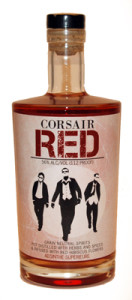Up until you started reading here at LikeYourLiquor, you might not have given too much thought to what’s in your glass. A vague idea of what distilling means, possibly what the ingredients are. But there’s some interesting science stuff going on right under your nose. Welcome to Weird Science, part 1! Check it out:
1. Charcoal filtration
Normally, when you think of charcoal, you probably think of backyards and burgers. Wood scraps are basically baked to a point that everything is burned away, leaving mostly pure carbon. A little manufacturing magic and you have those nifty little briquettes for your grill. And we’ve all heard of this for water, right? Activated carbon filters and whatnot. So what precisely does this have to do with whiskey? Two things: whiskey is aged in charred oak barrels and in the state of Tennessee, it’s filtered through maple charcoal. Say what? That lovely, tasty bourbon you’re sipping was aged in charcoal? Wait, don’t panic, let me explain.
There’s a couple of reasons whiskey is aged in charred barrels. Not only does the US law require it (and they have to be new, unlike finishing barrels that can be wine or rum or what have you) but it also imparts flavors through chemical reactions. So barrels are charred or toasted to the degree the master distiller feels will work and in goes the whiskey. There are lots of factors that are at play during the aging process: the size of the barrel, the type of char, the temperature of the rick house (fancy word for whiskey warehouse), the amount of time you leave the whiskey in the barrel. For now, suffice it to say that as time passes, your whiskey becomes tastier as it barrel ages and interacts with the charred wood. The folks at Scientific American do a great job of explaining the details.
In order to call your hooch Tennessee whiskey, it has to be made in Indiana – just kidding, just making sure you’re still reading. It has to be made in Tennessee, of course. Additionally, the folks over at Jack D’s created a process dubbed the Lincoln County Process that involves filtering the whiskey through maple charcoal before putting it in barrels to age. The distilleries that use this process say it improves the flavor of the whiskey. I’ll leave that up to others to decide – I’ve never really been a huge fan.
I’m sure you’ve also seen vodka that touts being filtered through things like diamonds up to 9 times after being triple- or quadruple-distilled. There are several Russian vodkas that are priced at ONE MILLION DOLLARS (cue a little Dr. Evil, you’re welcome), but that’s mainly because they come with a free SUV or a bottle that has actual diamonds in it. But that’s not what I’m talking about.
Distilling, if you recall from Liquor 101, is removing the water from the alcohol. Very basic. Vodka in the US must be distilled at 190 proof (95% ABV) and then cut with water to normally around 80 proof for bottling. Before the water is added, vodka is filtered through a variety of things, including precious gems. Riddle me this: if charcoal filters out impurities and adds flavors because of chemical reactions, what does a substance that’s harder than glass do? And, if filtering through diamonds does add something – why doesn’t your glass change the flavor of your martini? Just my opinion, but I believe that the flavor of a particular vodka has far more to do with its ingredients and the way it’s distilled, than what shiny girl’s-best-friend it’s filtered through before bottling.
2. Ostwald ripening
Absinthe has enjoyed a resurgence in the US in the last few years, thanks to updated legislation. It was banned from 1915 all the way until 2007 because of the reputation it received during the late 19th century. I’ve read a ton and watched documentaries (check out Netflix) and I’m not entirely sure if the hallucinations that are attributed to wormwood are really from what thujone is doing to the brain or the fact that people were chugging 120-140 proof spirits like it was cool! I think the ABV had a lot more to do with it than the Green Fairy, but to each his own.
You can finally, legally buy absinthe in the US again. The traditional way to drink absinthe requires several items: absinthe, sugar cubes, an absinthe spoon and ice cold water. You pour a measure of absinthe in a glass, place the spoon over the mouth of the glass. Make sure your water is ICE cold – I usually put iced water in a glass measuring cup, since it helps to control the pour and I can put it in the fridge between rounds. Ice water at the ready, put your sugar cube on the spoon and very slowly pour the water over the cube. Note: if your drink doesn’t begin to cloud immediately, stop – your water isn’t cold enough and adding more won’t help – add ice to the water instead. It helps if you can put your glass somewhere you can get it to eye level, so you can watch.
As the cold water hits the absinthe, something called Ostwald ripening occurs. No, not the guy and the grassy knoll thing. Ostwald refers to a chemical reaction where molecules of oil try to expose as little of themselves to water as possible. While smaller bits are driven apart, larger ones keep adding others and eventually become large enough to see, which is that lovely, cloudy colorful reaction you see in absinthe. And yes, it’s the same in ouzo or pasti, depending on which version of the anise-flavored liquor you prefer. Ostwald is the scientific name for the reaction; you’ll more commonly hear it called, “louche”, which is pronounced to rhyme with what you might call your ex. Ostwald also affects your ice cream left in the freezer – check out IO9 .
Some of our craft distillers are even taking a shot at it, which has yielded varieties like Corsair’s RED Absinthe.
Erik, one of Corsair’s distillers, gave me some particulars on RED: it takes an amazing 23 pounds of botanicals to make just 12 gallons of RED. Given its lovely red color (from hibiscus!), I asked if it would louche the same way? Yes! It will turn a lovely pinkish-blue color depending on how much water you add. The amount of water you add is mostly a personal preference, as Erik pointed out. Since you can’t take it out once you’ve added it, I’d suggest tasting it first, then adding water by a tablespoon or so at a time. The sugar cube is also a preference – if it’s your first time trying absinthe, I might suggest at least a little bit. If you’re in Nashville, stop by their cocktail bar and give it a try or take a tour!
Success! You’ve learned 2 of the 4 funky facts about the spirits in your glass. Stay tuned next week for part 2. Cheers!







[…] and something called Ostwald ripening. If you missed it, what are you waiting for? Read it now! Now that you’re all caught up, on we […]